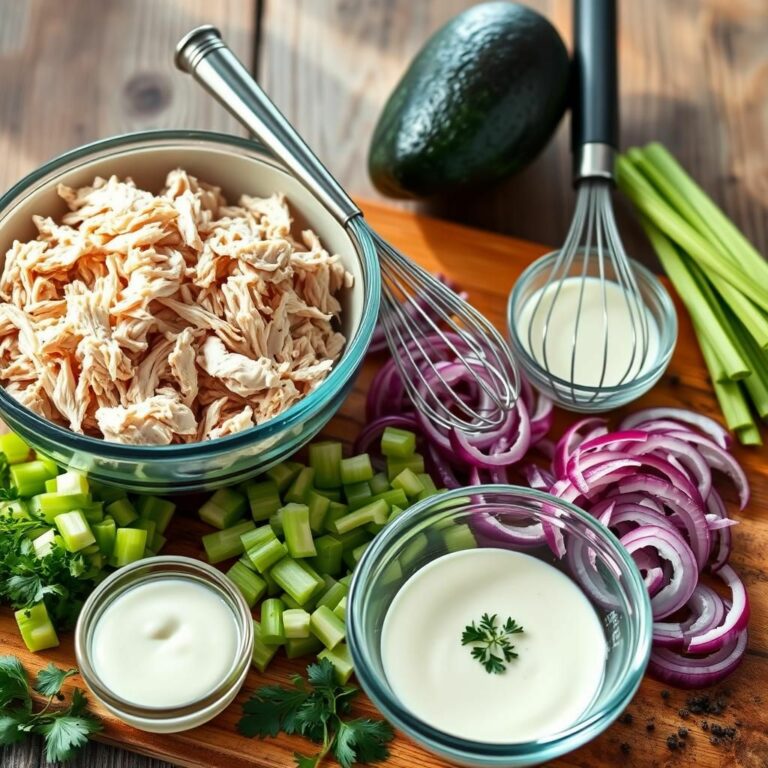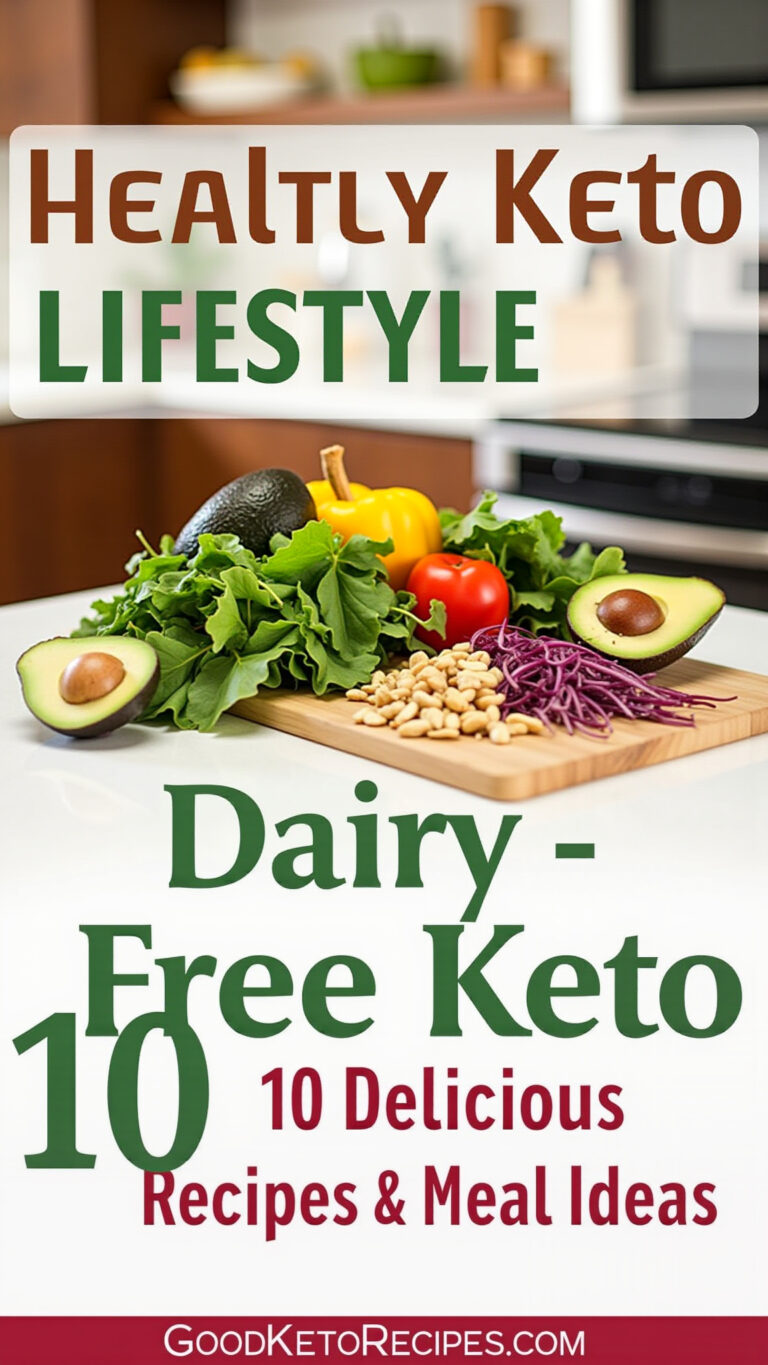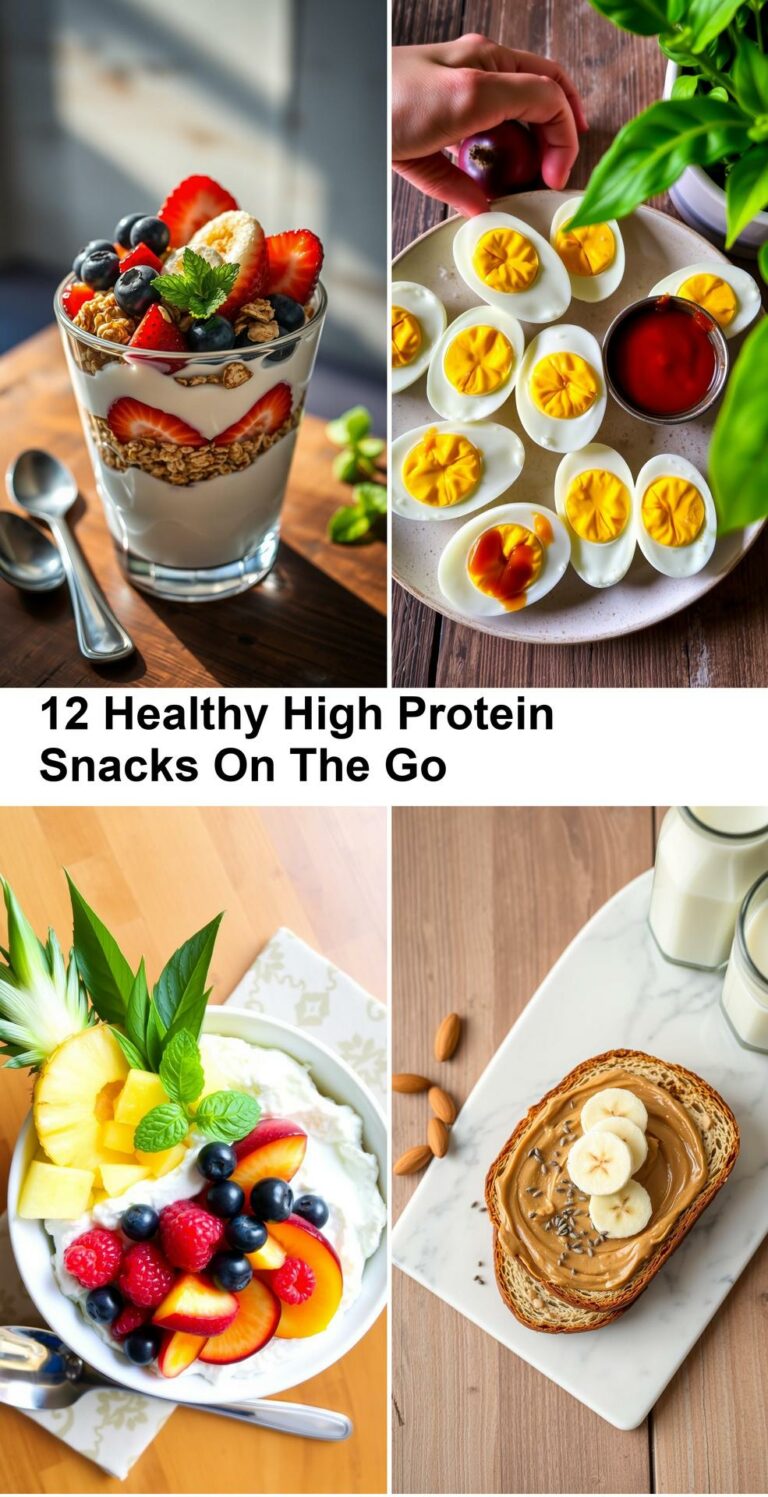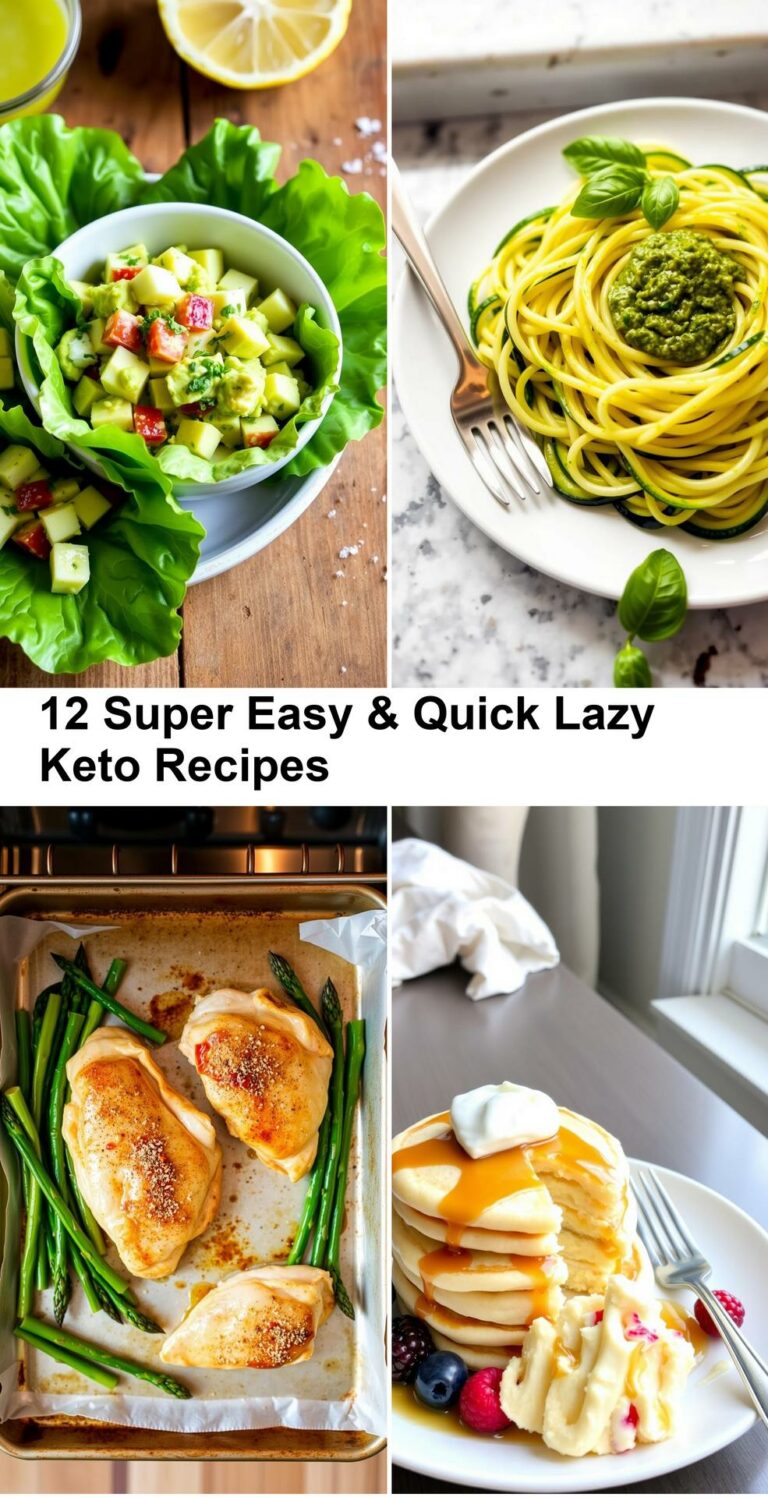Kickstart Your Ketogenic Journey
Embarking on a ketogenic diet can feel overwhelming, especially for beginners. This comprehensive 19-day keto diet plan simplifies the process, providing you with a structured approach, delicious recipes, and essential guidance to successfully transition into ketosis and experience its benefits. This plan focuses on whole, unprocessed foods, emphasizing healthy fats, moderate protein, and very low carbohydrates. Prepare to fuel your body, burn fat, and unlock a healthier you!
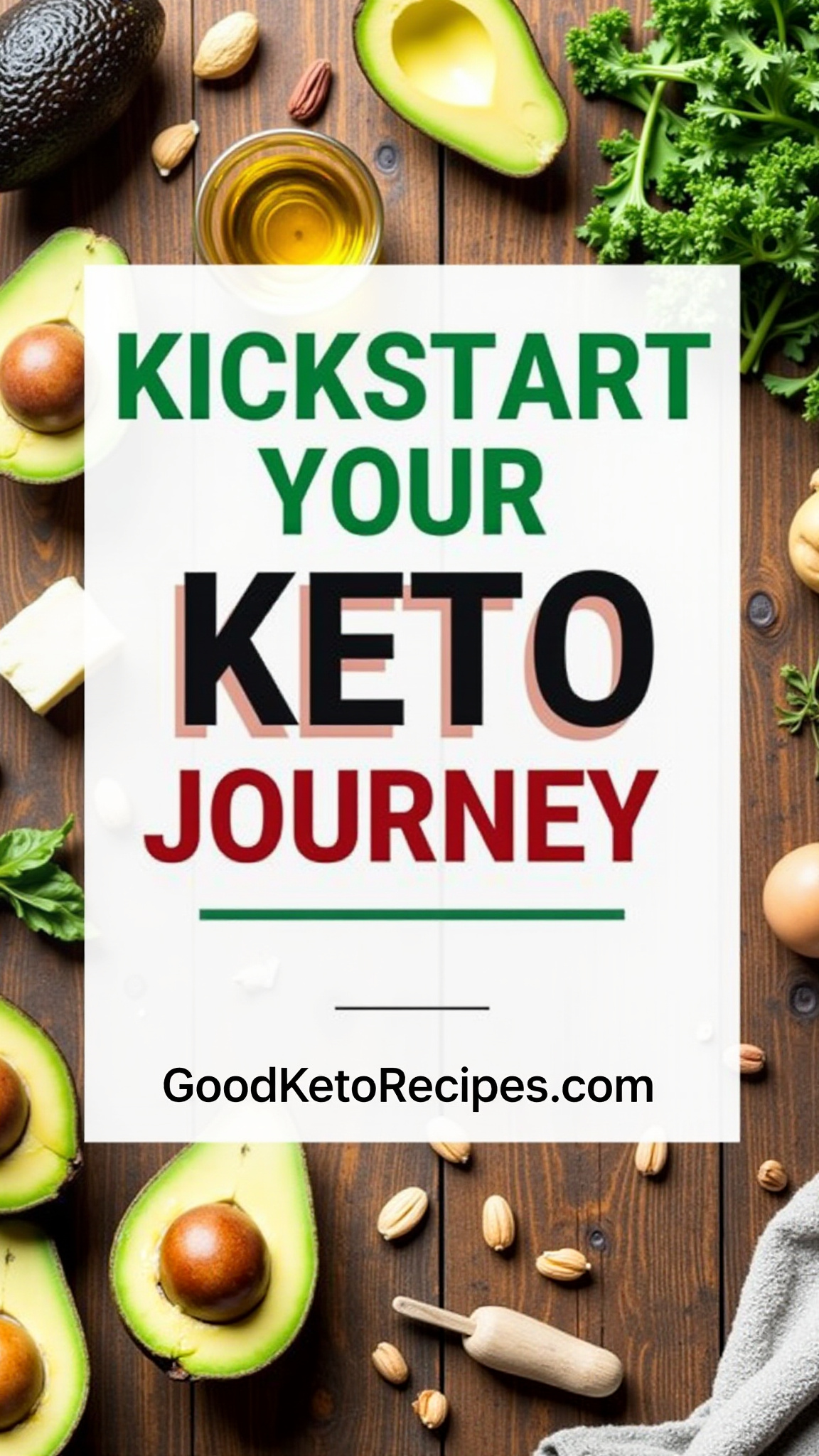
What is the Keto Diet?
The ketogenic diet is a high-fat, moderate-protein, and very low-carbohydrate diet. This dietary approach forces your body to switch its primary fuel source from glucose (derived from carbohydrates) to ketones, which are produced from the breakdown of fats. This metabolic state is called ketosis.
When you drastically reduce your carbohydrate intake (typically below 50 grams per day), your body depletes its glycogen stores (stored glucose). Consequently, the liver begins to convert fat into fatty acids and ketones. These ketones then become the primary energy source for the brain and other tissues.
The keto diet has gained popularity for its potential benefits, including weight loss, improved blood sugar control, increased energy levels, and enhanced mental clarity. However, it’s crucial to approach the keto diet with proper knowledge and planning to ensure safety and effectiveness.
Benefits of Following a Keto Diet
- Weight Loss: By shifting your body into a fat-burning mode, the keto diet can promote significant weight loss. Studies have shown that the keto diet can be more effective for weight loss than low-fat diets.
- Improved Blood Sugar Control: The keto diet can stabilize blood sugar levels by minimizing the consumption of carbohydrates, which are the primary driver of blood sugar spikes. This is particularly beneficial for individuals with type 2 diabetes or insulin resistance.
- Increased Energy Levels: While the initial transition into ketosis might lead to some fatigue (the “keto flu”), many individuals report increased and more sustained energy levels once they become keto-adapted.
- Enhanced Mental Clarity: Ketones are a potent fuel source for the brain, and some individuals experience improved focus, concentration, and mental clarity on the keto diet.
- Reduced Appetite: The high-fat content of the keto diet can promote satiety and reduce cravings, leading to a natural reduction in calorie intake.
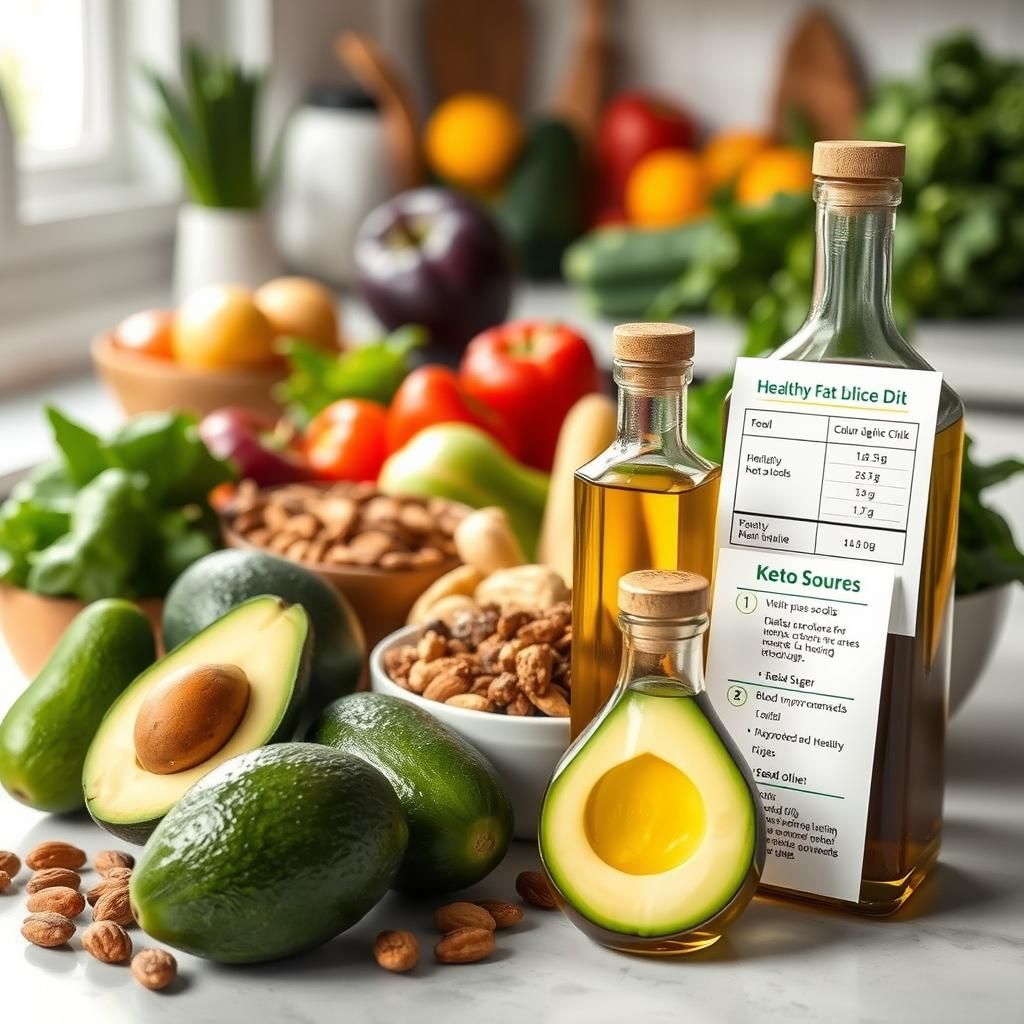
19-Day Keto Meal Plan: A Detailed Guide for Beginners
This 19-day keto meal plan is designed to be simple, effective, and sustainable. It incorporates a variety of delicious keto-friendly recipes and provides flexibility to adjust portions based on your individual needs. Remember to consult with your healthcare provider or a registered dietitian before starting any new diet, especially if you have underlying health conditions.
Key Principles:
- Macronutrient Ratio: Aim for a macronutrient ratio of approximately 70-80% fat, 20-25% protein, and 5-10% carbohydrates.
- Hydration: Drink plenty of water throughout the day (at least 8 glasses) to stay hydrated and support kidney function.
- Electrolytes: Supplement with electrolytes, such as sodium, potassium, and magnesium, especially during the initial stages of the keto diet, to combat the “keto flu.”
- Listen to Your Body: Pay attention to your body’s signals and adjust the plan as needed. Don’t be afraid to experiment with different recipes and portion sizes to find what works best for you.
- Meal Prep: Preparing meals in advance can significantly simplify the keto diet. Dedicate a few hours each week to meal prepping and storing food in containers for easy access.
Day 1-3: Keto Induction Phase (Focus on Minimizing Carbs)
The first three days are crucial for initiating ketosis. Focus on minimizing carbohydrate intake and increasing your fat consumption.
- Breakfast: Scrambled eggs with spinach and avocado (approx. 5g net carbs)
- Lunch: Caesar salad with grilled chicken (no croutons, full-fat dressing) (approx. 6g net carbs)
- Dinner: Salmon baked with asparagus and butter (approx. 4g net carbs)
- Snacks: Handful of almonds, celery sticks with cream cheese (approx. 2-3g net carbs per snack)
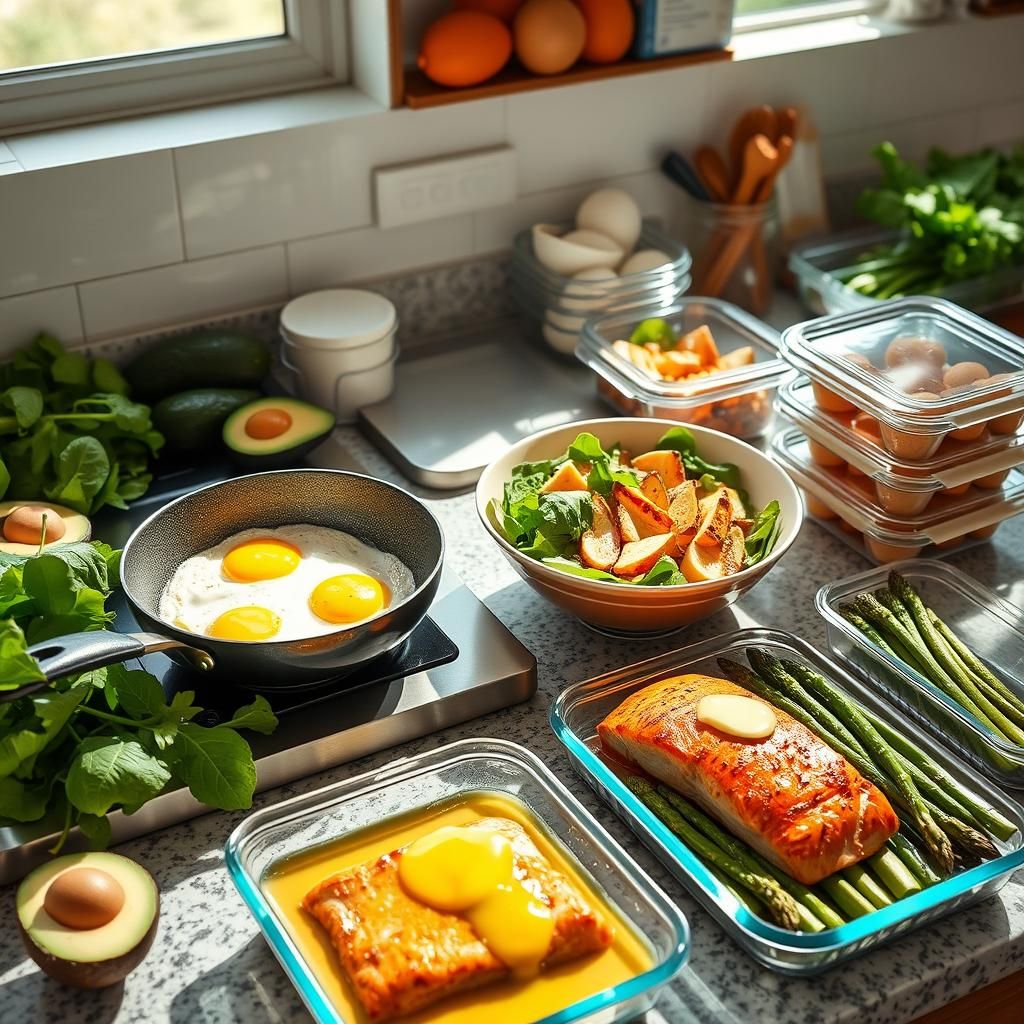
Day 4-7: Adjusting and Stabilizing (Introducing Variety)
As your body starts adapting to ketosis, introduce more variety into your meals while maintaining a low-carb intake.
- Breakfast: Keto smoothie with spinach, avocado, almond milk, and protein powder (approx. 7g net carbs)
- Lunch: Tuna salad lettuce wraps (made with avocado mayo) (approx. 5g net carbs)
- Dinner: Ground beef and broccoli stir-fry with coconut aminos (approx. 8g net carbs)
- Snacks: Macadamia nuts, cheese crisps (approx. 2-4g net carbs per snack)
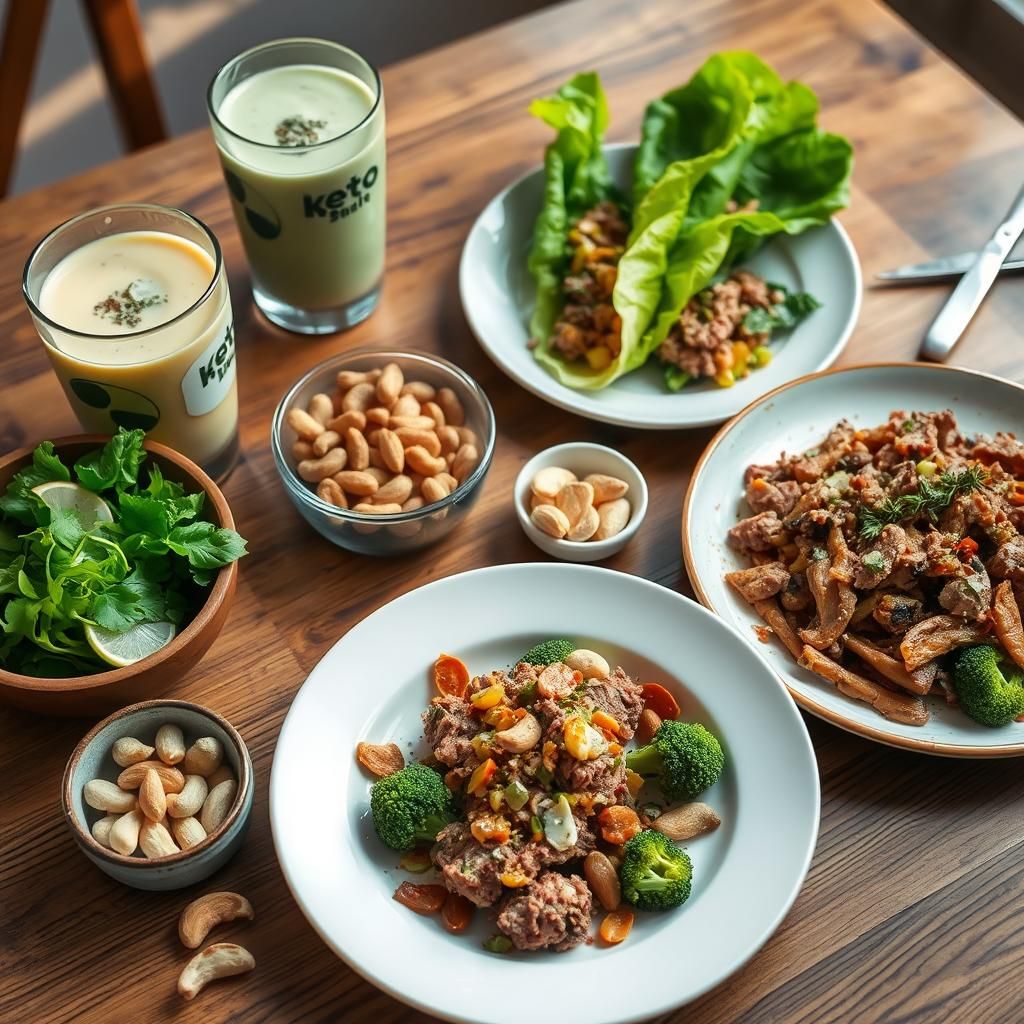
Day 8-12: Exploring Keto Recipes (Increasing Flavor)
Experiment with different keto-friendly recipes and flavor combinations to keep your meals exciting and enjoyable.
- Breakfast: Bulletproof coffee (coffee blended with MCT oil and butter) and a hard-boiled egg (approx. 1g net carbs)
- Lunch: Leftover ground beef and broccoli stir-fry (approx. 8g net carbs)
- Dinner: Chicken thighs with roasted Brussels sprouts and bacon (approx. 7g net carbs)
- Snacks: Pork rinds, olives (approx. 0-2g net carbs per snack)

Day 13-16: Fine-Tuning and Maintenance (Listening to Your Body)
Pay close attention to your body’s response to the diet and adjust your macronutrient ratios accordingly. Some individuals may need to increase or decrease their fat intake based on their activity level and metabolism.
- Breakfast: Omelet with cheese, mushrooms, and peppers (approx. 6g net carbs)
- Lunch: Big Mac Salad (ground beef, lettuce, cheese, pickles, special sauce made with mayo and keto-friendly sweetener) (approx. 9g net carbs)
- Dinner: Steak with creamed spinach (approx. 5g net carbs)
- Snacks: Avocado with everything bagel seasoning, sugar-free jello (approx. 2-4g net carbs per snack)
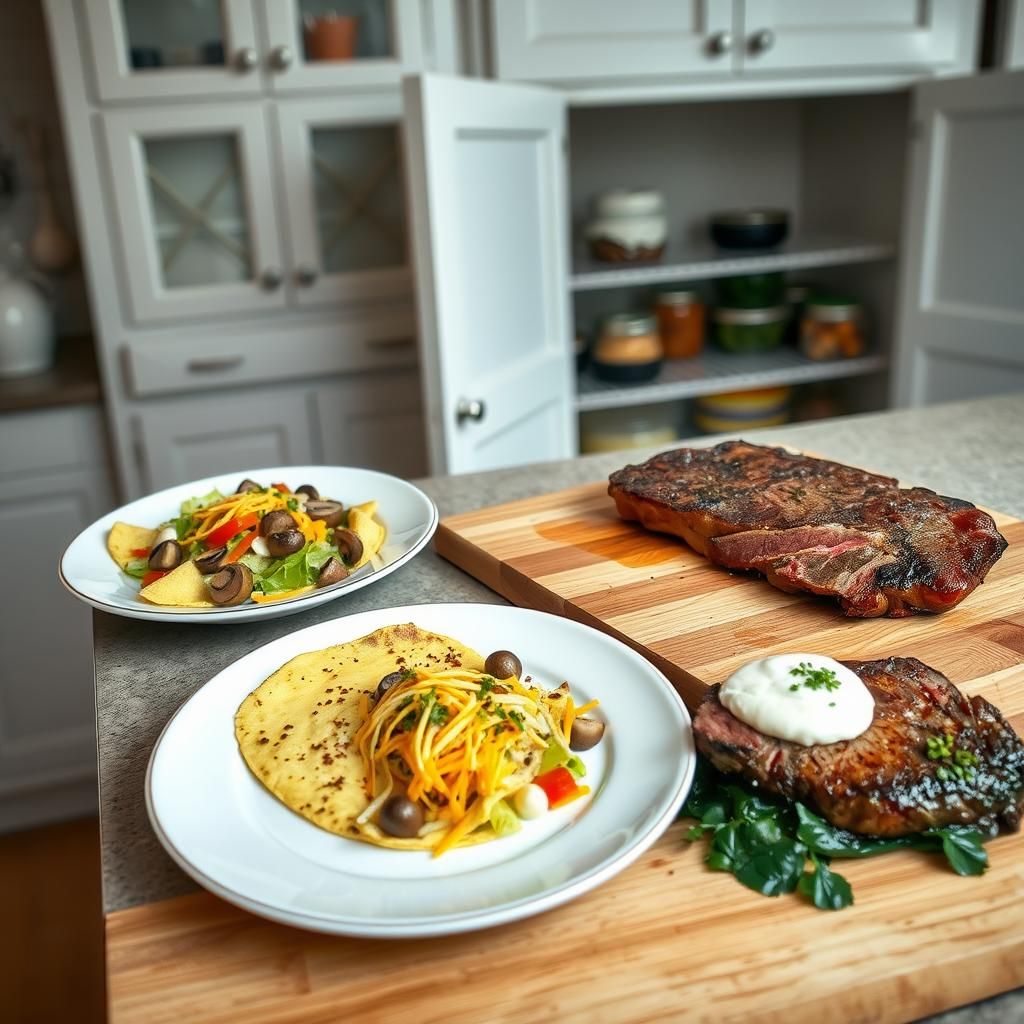
Day 17-19: Continuing the Keto Lifestyle (Sustainability)
Focus on making the keto diet a sustainable lifestyle choice. Continue to explore new recipes, track your progress, and stay committed to your health goals. Consider incorporating intermittent fasting for added benefits.
- Breakfast: Chia seed pudding with coconut milk and berries (approx. 8g net carbs)
- Lunch: Leftover Steak with creamed spinach (approx. 5g net carbs)
- Dinner: Keto pizza (made with cauliflower crust and low-carb toppings) (approx. 10g net carbs)
- Snacks: Full-fat Greek yogurt with berries, pumpkin seeds (approx. 4-6g net carbs per snack)

Keto-Friendly Recipes: Delicious and Easy to Prepare
Here are some detailed keto-friendly recipes to incorporate into your 19-day meal plan:
1. Keto Smoothie:
- Ingredients:
- 1 cup spinach
- 1/2 avocado
- 1 scoop keto-friendly protein powder
- 1 cup unsweetened almond milk
- 1 tbsp chia seeds
- Ice (optional)
- Instructions:
- Combine all ingredients in a blender.
- Blend until smooth.
- Enjoy immediately.
- Nutritional Information (approximate): Calories: 300, Fat: 25g, Protein: 20g, Net Carbs: 7g
2. Tuna Salad Lettuce Wraps:
- Ingredients:
- 2 cans tuna (in water, drained)
- 1/2 cup avocado mayo
- 1/4 cup chopped celery
- 2 tbsp chopped red onion
- Salt and pepper to taste
- Lettuce leaves
- Instructions:
- In a bowl, combine tuna, avocado mayo, celery, and red onion.
- Season with salt and pepper.
- Spoon tuna salad into lettuce leaves.
- Serve immediately.
- Nutritional Information (approximate): Calories: 350, Fat: 30g, Protein: 25g, Net Carbs: 5g
3. Ground Beef and Broccoli Stir-Fry:
- Ingredients:
- 1 lb ground beef
- 2 cups broccoli florets
- 2 tbsp coconut aminos
- 1 tbsp sesame oil
- 1 clove garlic, minced
- 1/2 inch ginger, grated
- Salt and pepper to taste
- Instructions:
- In a large skillet, brown ground beef over medium heat.
- Drain excess fat.
- Add garlic and ginger and cook for 1 minute.
- Add broccoli florets and stir-fry for 5-7 minutes, until tender-crisp.
- Stir in coconut aminos and sesame oil.
- Season with salt and pepper.
- Serve hot.
- Nutritional Information (approximate): Calories: 400, Fat: 25g, Protein: 30g, Net Carbs: 8g
4. Chicken Thighs with Roasted Brussels Sprouts and Bacon:
- Ingredients:
- 4 chicken thighs (bone-in, skin-on)
- 1 lb Brussels sprouts, halved
- 4 slices bacon, chopped
- 2 tbsp olive oil
- Salt and pepper to taste
- Instructions:
- Preheat oven to 400°F (200°C).
- In a bowl, toss Brussels sprouts with olive oil, salt, and pepper.
- Spread Brussels sprouts on a baking sheet.
- Place chicken thighs on top of the Brussels sprouts.
- Sprinkle chopped bacon over the chicken and Brussels sprouts.
- Roast for 30-40 minutes, or until chicken is cooked through and Brussels sprouts are tender.
- Serve hot.
- Nutritional Information (approximate): Calories: 500, Fat: 35g, Protein: 35g, Net Carbs: 7g
5. Keto Pizza (Cauliflower Crust):
- Ingredients (Crust):
- 1 medium head cauliflower, grated
- 1 egg, beaten
- 1/2 cup shredded mozzarella cheese
- 1/4 cup almond flour
- 1 tsp dried oregano
- Salt and pepper to taste
- Ingredients (Toppings):
- 1/2 cup marinara sauce (sugar-free)
- 1 cup shredded mozzarella cheese
- Your choice of keto-friendly toppings (e.g., pepperoni, mushrooms, olives, peppers)
- Instructions (Crust):
- Preheat oven to 400°F (200°C).
- Steam grated cauliflower until tender (about 5-7 minutes).
- Place steamed cauliflower in a cheesecloth or towel and squeeze out as much excess water as possible.
- In a bowl, combine cauliflower, egg, mozzarella cheese, almond flour, oregano, salt, and pepper.
- Mix well.
- Press mixture onto a baking sheet lined with parchment paper to form a pizza crust.
- Bake for 15-20 minutes, or until golden brown.
- Instructions (Toppings):
- Spread marinara sauce over the baked crust.
- Sprinkle with mozzarella cheese.
- Add your choice of toppings.
- Bake for another 5-10 minutes, or until cheese is melted and bubbly.
- Serve hot.
- Nutritional Information (approximate, without toppings): Calories: 300, Fat: 20g, Protein: 20g, Net Carbs: 10g
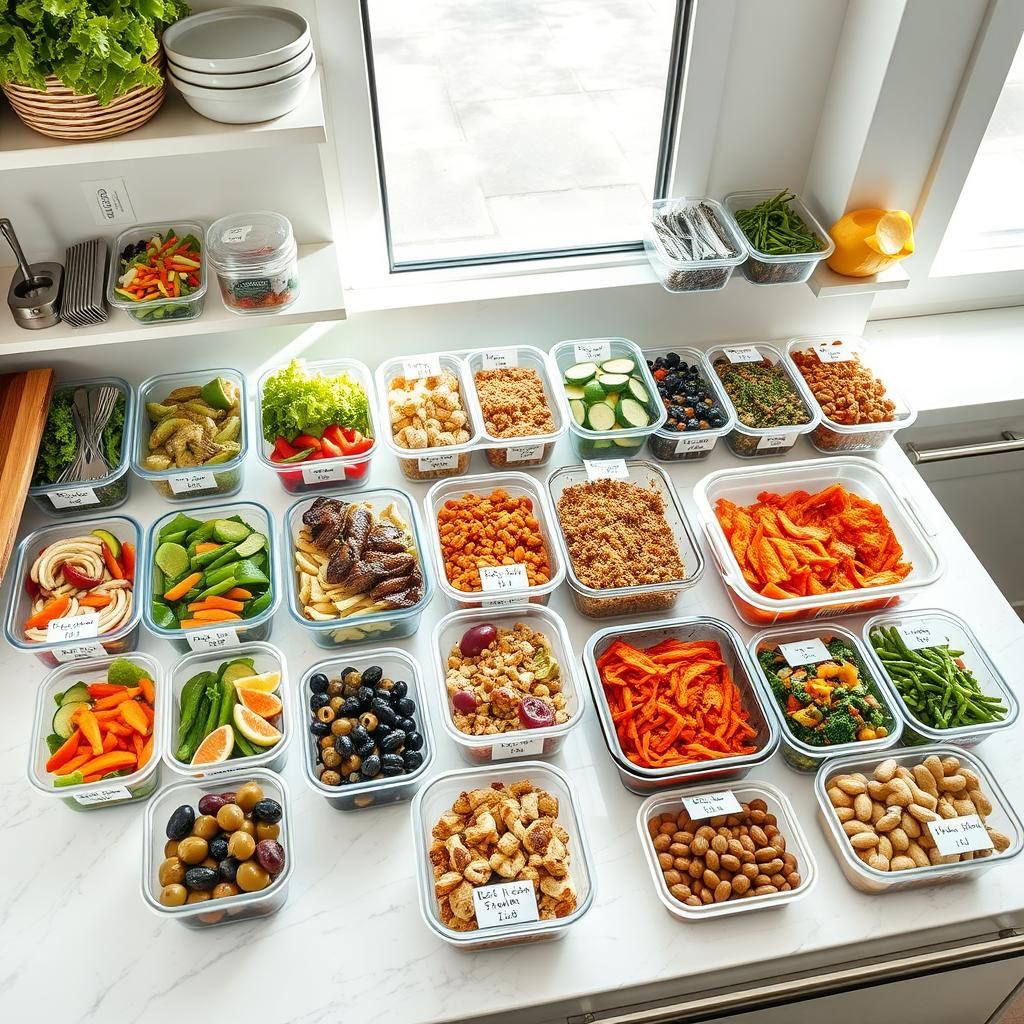
Tips for Success on the Keto Diet
- Track Your Macros: Use a food tracking app (e.g., MyFitnessPal, Carb Manager) to monitor your macronutrient intake and ensure you’re staying within your target ranges.
- Plan Your Meals: Meal planning is essential for success on the keto diet. Take time each week to plan your meals and create a shopping list to avoid impulsive food choices.
- Stay Hydrated: Drink plenty of water throughout the day to stay hydrated and support kidney function.

- Manage Electrolytes: Supplement with electrolytes, such as sodium, potassium, and magnesium, especially during the initial stages of the keto diet, to combat the “keto flu.”
- Be Patient: It takes time for your body to adapt to ketosis. Don’t get discouraged if you don’t see results immediately.
- Listen to Your Body: Pay attention to your body’s signals and adjust the plan as needed.
- Find Support: Connect with other people who are following the keto diet for support and motivation.
- Consult a Professional: Consider working with a registered dietitian or healthcare provider to personalize your keto diet plan and address any individual health concerns.
- Read Food Labels Carefully: Hidden sugars and carbohydrates are everywhere. Always scrutinize nutrition labels for sneaky ingredients.
- Embrace Healthy Fats: Make friends with avocados, olive oil, coconut oil, nuts, and seeds. They are your fuel.
- Don’t Fear Salt: Sodium is crucial for maintaining electrolyte balance, especially when starting keto. Don’t be afraid to salt your food adequately.
Potential Side Effects and How to Manage Them
While the keto diet can offer numerous benefits, it’s essential to be aware of potential side effects and how to manage them.
- Keto Flu: The “keto flu” is a common set of symptoms that can occur during the initial transition into ketosis. These symptoms can include fatigue, headache, nausea, irritability, and constipation. To manage the keto flu, stay hydrated, supplement with electrolytes, and gradually reduce your carbohydrate intake.
- Constipation: The low-fiber content of the keto diet can lead to constipation. To prevent constipation, eat plenty of non-starchy vegetables, drink plenty of water, and consider taking a fiber supplement.
- Leg Cramps: Leg cramps can occur due to electrolyte imbalances. To prevent leg cramps, supplement with magnesium and potassium.
- Kidney Stones: In rare cases, the keto diet can increase the risk of kidney stones. If you have a history of kidney stones, consult with your healthcare provider before starting the keto diet.
- Nutrient Deficiencies: It’s crucial to eat a variety of nutrient-dense foods on the keto diet to avoid nutrient deficiencies. Consider taking a multivitamin to ensure you’re getting all the essential vitamins and minerals.
Common Keto Mistakes to Avoid

- Not Eating Enough Fat: Fat is your primary fuel source on the keto diet. Not eating enough fat can lead to fatigue and cravings.
- Eating Too Much Protein: While protein is essential for muscle maintenance, eating too much protein can be converted into glucose, which can kick you out of ketosis.
- Eating Hidden Carbs: Many foods contain hidden carbs, such as sauces, dressings, and processed foods. Always read food labels carefully.
- Not Tracking Macros: Tracking your macronutrient intake is essential for ensuring you’re staying within your target ranges.
- Giving Up Too Soon: It takes time for your body to adapt to ketosis. Don’t get discouraged if you don’t see results immediately.
The Importance of Sustainability
The keto diet can be an effective tool for weight loss and improving overall health, but it’s essential to approach it as a sustainable lifestyle choice rather than a temporary fix.
- Focus on Whole Foods: Prioritize whole, unprocessed foods, such as lean proteins, healthy fats, and non-starchy vegetables.
- Find Recipes You Enjoy: Experiment with different keto-friendly recipes and flavor combinations to keep your meals exciting and enjoyable.
- Be Flexible: Don’t be afraid to adjust the plan as needed. Life happens, and it’s okay to have occasional deviations from the diet.
- Listen to Your Body: Pay attention to your body’s signals and adjust your macronutrient ratios accordingly.
- Seek Support: Connect with other people who are following the keto diet for support and motivation.

Check Out More Resources
This 19-day keto diet plan provides a comprehensive roadmap for beginners to successfully transition into ketosis and experience its potential benefits. By following the guidelines, incorporating the delicious recipes, and avoiding common mistakes, you can embark on a transformative journey towards improved health and well-being. Remember to prioritize sustainability, listen to your body, and seek support when needed. Good luck on your ketogenic adventure!
Affiliate Link Disclosure: Some of the links in this post are affiliate links. This means that if you click on the link and make a purchase, I may receive a small commission at no extra cost to you. I only recommend products or services that I personally use and believe will be valuable to my readers.



